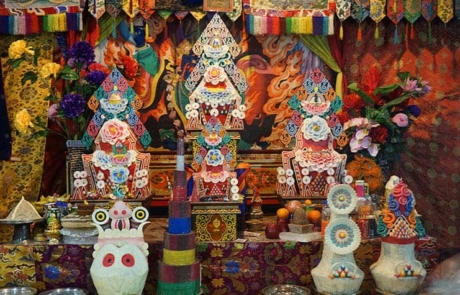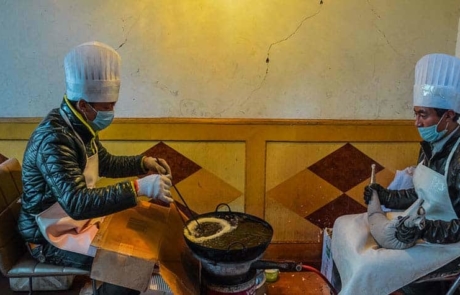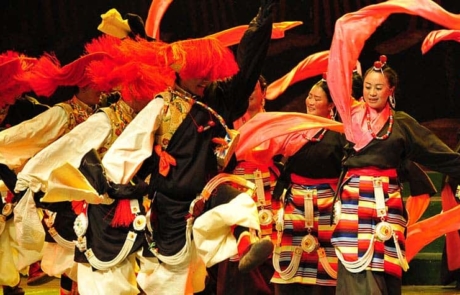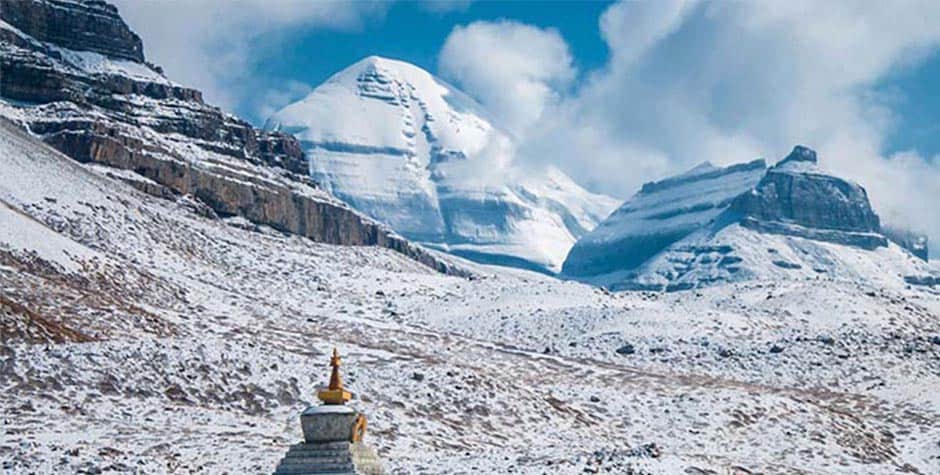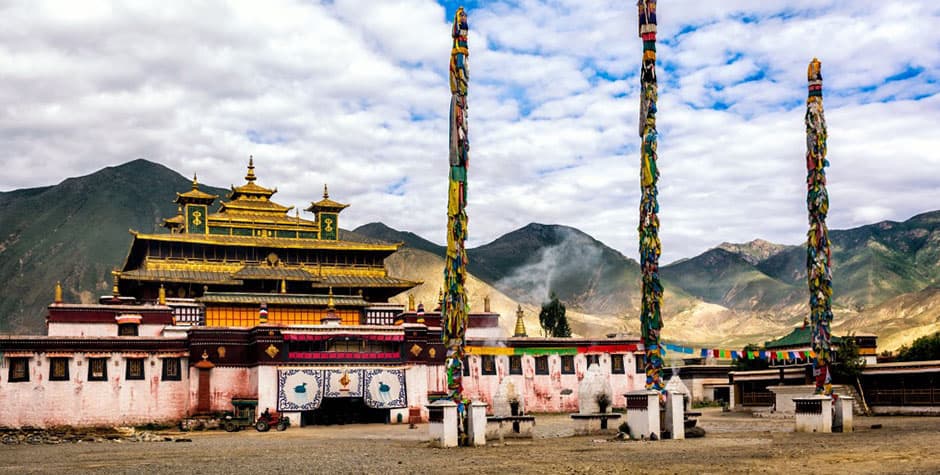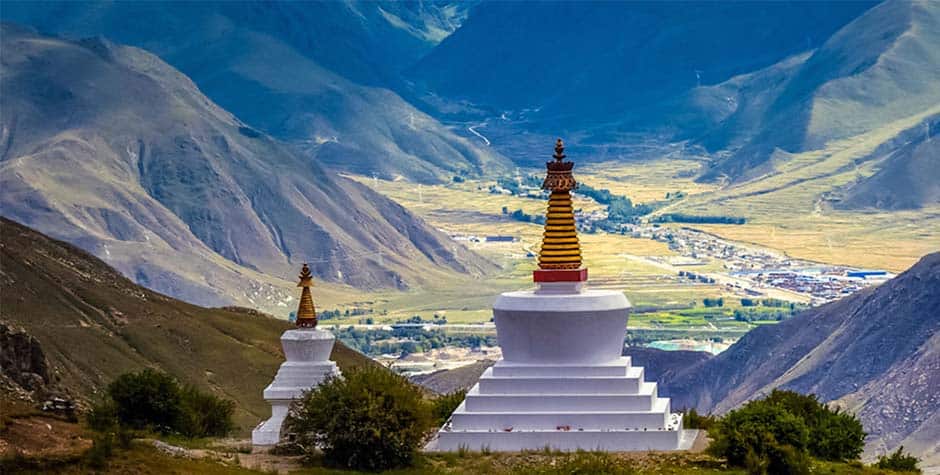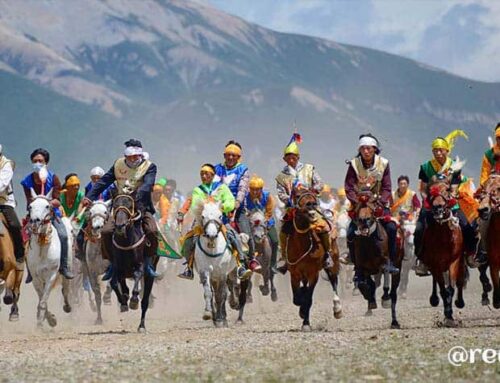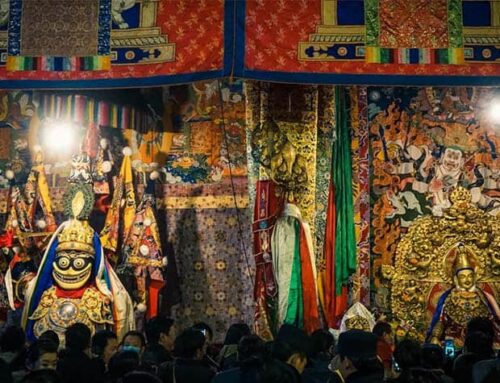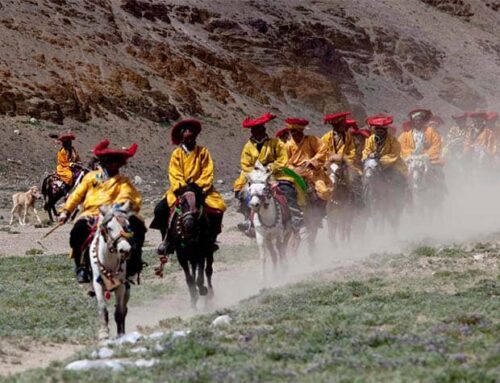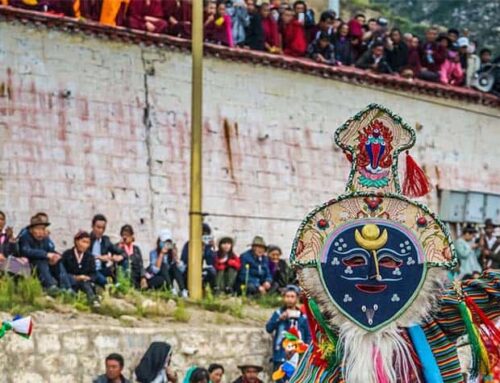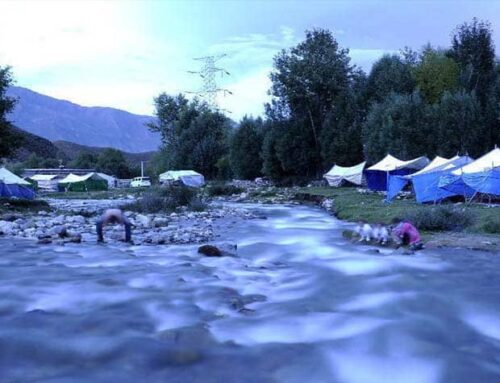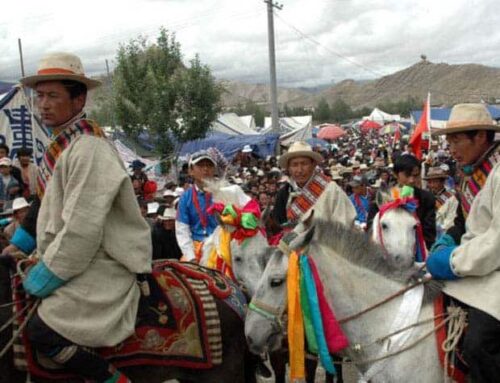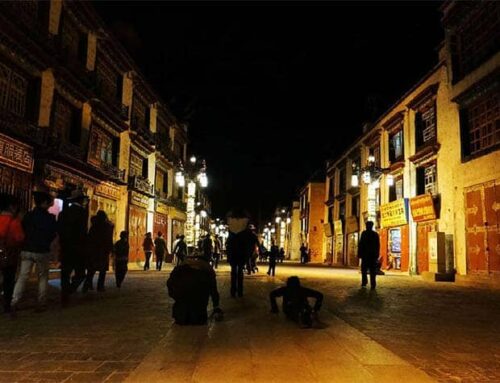Losar means Tibetan New Year. It is one of the most important festivals of the year, similar to Christmas in the West and the Spring Festival in Other parts of China. During Losar, the Tibetan New Year, we will ensure that everyone is back home to celebrate this special occasion. The celebration of the Tibetan New Year depends on the size of the family circle. The festival typically lasts 15 days, although some families may observe it for a month.
Losar is not only a family gathering for celebration but also a significant time for spiritual practice and planning for the coming years. One of the essential visible features in homes during Losar is the offerings made at the house altar, as well as the food.
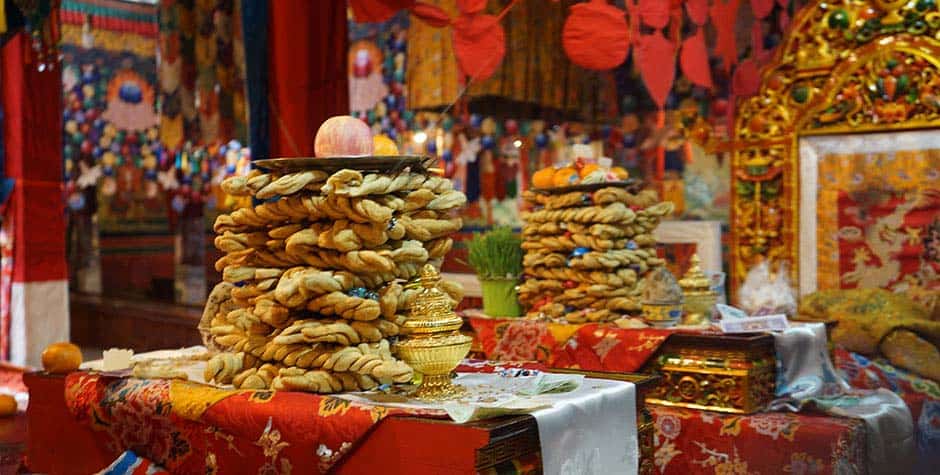
The preparation of Losar
It is famously said in Tibet that preparations for the coming Losar begin after the current new year. However, if we consider material preparation, it typically begins one Month before the Tibetan New Year. Particularly in my household, my mother and my wife would go for circumambulation around the Potala Palace and Barkhor Street every single Day. One way, if they encounter someone selling items for the New Year celebration, they would buy it and collect it way ahead of time.
Kapse
One of the essential preparations we will have to make is the offering of Kapse. Kapse is the deep-fried dough. It can be use for both offerings and snacks. Traditionally, when families were prominent and joined together, they would prepare tons of it for the new year. Now we can buy it from the market. We would order it well in advance and store it safely at home. The structure and strength of your kapse offering can show you how your family will be in the next new year.
Foods
The second most important preparation to make is the food for the new year. Since the celebration is a long one and the festival is ongoing, there will be significantly fewer shop openings. We will therefore need to ensure we have enough of all the necessary items for a month-long celebration. The villagers from the nearby villages are all coming to Lhasa to sell their produce.
Clothes
The third essential preparation we will have to make is the traditional Tibetan cloth. It is consider very auspicious to look one's best during times of celebration. We will need to prepare all the require clothing items well in advance and wash those that we plan to reuse.
The Celebration of Tibetan New Year Losar
29th Day of the last month of the Old Year.
The actual celebration began two days ahead, on the 29th Day of the last Month (or 12th Month). We will start by cleaning the entire house. Cleaning the whole house one more time before the New Year's Celebration will ward off all bad luck and omens. At night, we gather all the family members together for a special soup noodle dinner. This marks the beginning of the family gathering for the New Year celebration. This ritual noodle is call as Gutuk. During the ritual of drinking, we will put the different shapes of dough and handwritten in a larger dough. It is believe that you will receive the same items based on your personality. For example, salt is for the lazy, the Sun for fame, and the Moon for kindness. This fortune cookie kind of custom creates a light moment before the beginning of the traditional New Year.
While everyone is eating noodles, the eldest male member of the family will prepare a human-shaped dough figure. When everyone is finish, we will put the leftovers from each cup over that dough statue. Then they would bring it to the road Junction near the house. This is to ward off all misfortune, illness, and evil Karma from the old year.
Now, in Tibet, during dinner time, the Tibetan Language Television channel Xizang TV will start showing the Tibetan New Year Gala. We consider it the grandest show in Tibet.
The Losar eve
The word for the Losar eve is call Nangkar. Losar is the busiest Day in the preparation for Losar. On the Day, all the ladies in the house will prepare all the edible items for the New Year, such as meat, chang (Tibetan Barley Wine), and dorma drassee. All the male members have to clean and put new curtains on the doors and Windows. They will also have to put white art on the walls in the Kitchen, like eight auspicious signs and animals.
Offering for Losar
Our offering to the three jewels of Buddhism is significant, and we must ensure it remains intact until the 15th Day of the Losar. If the offering gets demolish, it is consider a very inauspicious sign for the family. So, the most experience person in the family will put it out.
Losar Derka
The primary offering is call Derka. Derka is made of Huge Kapse. In the Bön era of Tibetan History, we offer parts of animals to the gods during the new year. Later, it was change to a similar version made with Kapse. Besides this, we offer cheese, Dorma Drassee, crystal Sugar, Brown sugar, Tea, Butter, salt, Thu (Cheese and barley cake), Sheep's head made of butter, and small saplings of barley plan.
Losar Droso Chenmar
Droso Chenmar is an offering made in a wooden box with Tibetan Butter art decorated on it. Chenmar is another essential part of the ritual. It signified good wishes for the prosperity of agriculture and herders in the New Year.
It usually takes until late at night to finish all the preparations for the new year. Once everything is complete, we will sweep the house one more time. As one of the first Days of the new year, we are not suppose to clean our homes. It will take good luck out of the household.
Finally, before midnight, all the members of the house have to wash their heads. It signifies washing away all the misfortune and obstacles of the old years.
First Day of the Tibetan New year
It is consider auspicious to obtain the first water from the source. That is why, on the first Day of the traditional Tibetan New Year, the girls from the house go to fetch water from the source River, well, or spring.
The mother of the house would prepare Konten and serve it to the rest of the family members in their beds. Konten is the boil Tibetan barley wine with kapse dipped in it.
The first word you should learn to speak is 'Tashi Delek,' a Tibetan greeting for auspiciousness and well-being. Afterward, everyone will wear their traditional clothes and start the first meal of the new year.
For the seating arrangement, the elder would sit in the most prominent corner, followed by the younger people in order of their age, after having one cup of Tibetan Yak Butter tea. The head of the family would bring the Khata to the altar room. After this, children would offer khata to older members and wish them Tashi Delek. Children are given the gift of money.
Chenmar Ceremony
Then, the parent would bring Chenmar and barley beer. First, it will be offered to the eldest member, followed by the rest of the family members in order of age. You will have to pick a pinch of tsampa from the Chenmar and toast it in the air, saying 'Tashi Delek' as a wish. Next is the Braley beer; you will have to dip the ring finger of your left hand in the beer and toast it in the air to say the Tashi Delek wish another time.
After this, they will serve Droma Dra see and the Barley porridge. After having these marks, the end of the morning ceremony in the house.
The first Day of the Tibetan New Year is considered the New Year for Buddhists and Lamas, so the main agenda of the Day is to visit monasteries and temples for pilgrimage. In Lhasa, we would commonly visit the Jokhang Temple, Ramoche Temple, and Potala Palace.
This day is considered so auspicious that we would refrain from engaging in any financial transactions or experiencing bad luck, which is why we would return home as soon as possible.
Second Day of the Tibetan New year
The second Day of the Tibetan New Year, or Losar, is considered the new year of the Public leaders, which is why the standard practice is for the people to gather around the local government building to thank their leaders for looking after them so well. Some government offices will hold a small ceremony for both lay people and government staff to celebrate and have a good time.
It is a perfect opportunity for ordinary people to express their gratitude to the local government, its leaders, and staff.
Third Day of the Tibetan New year
The third Day of the Tibetan New Year is consider the New Year of the Ordinary family. First, in the morning, everyone will gather around the rooftop of the house to change the prayer flags and perform incense offering rituals. Neighbors will exchange their good wishes and chenmar on the rooftop.
In many cases, it is an excellent visit to the eldest members of their extend family. It is a gathering of extend family members. It is a time for joy and sharing happiness.
Continuation of the Celebration of Losar
After the third Day, the exchange of in-house parties began. Different family members and friends would invite everyone to the in-house party. The celebration of Losar (Tibetan New Year) will last for varying lengths of time, depending on the size of your social circle.

Tenzin Travel is the best Tibetan Travel agency in Tibet. Our agency is one of Tibet’s most experienced tour operators, with over 20 years in the industry. Founded by a local Tibetan family with decades of expertise as guides, managers, and route planners. We craft personalized itineraries for every traveler. Our agency is the highest-rated and most recommended Tibet travel agency on TripAdvisor, Google, and Lonely Planet.
We can make holistic arrangements for your trip to Tibet. Including a Tibet Travel Permit, a Tibetan tour guide, flight tickets, train tickets, vehicle arrangements, and hotel bookings in Tibet.
Our Lhasa office is just steps from Barkhor Square. All our Tibetan team ensures deep cultural, linguistic, and religious insights, setting us apart from other agencies.
Beyond tourism, we support Tibetan communities by donating a portion of each tour to local projects. Your travel to Tibet is about more than profit—it’s about the opportunity for us to give back.

